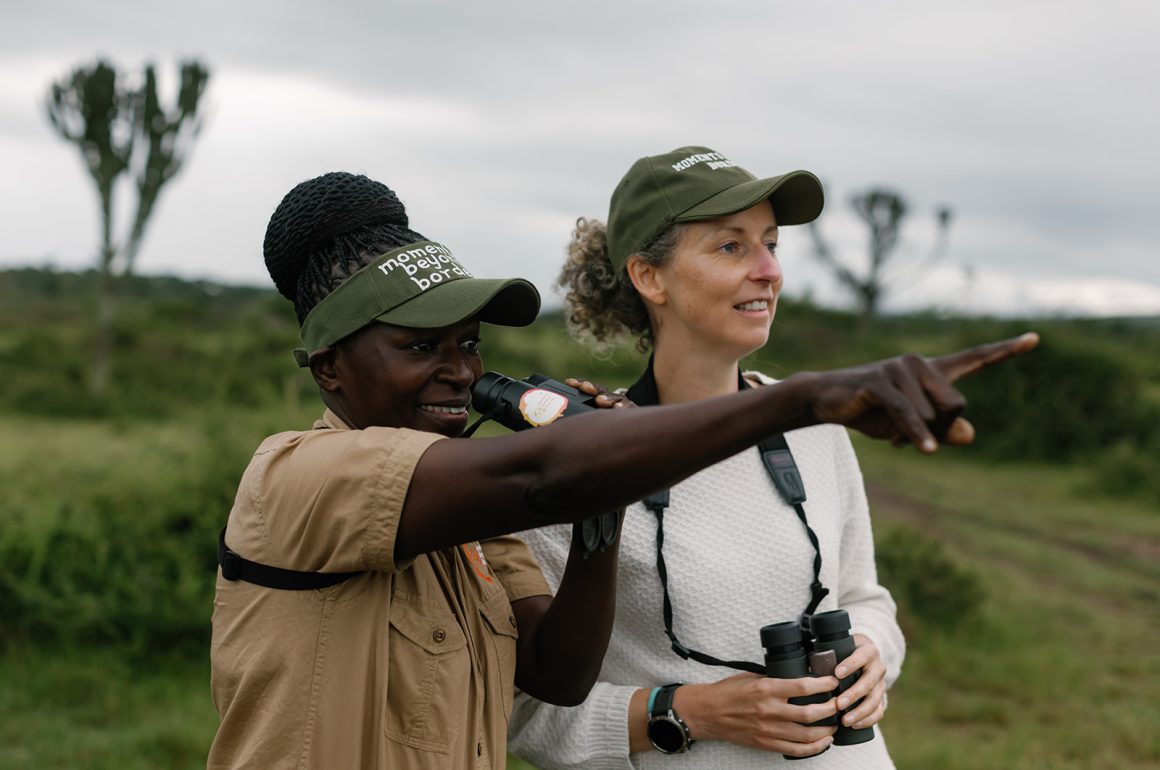
What is your favorite bird species?
Grey-crowned Crane
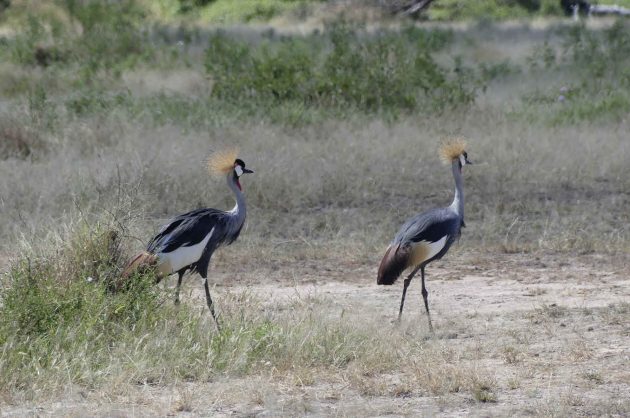
What is your name, and where do you live?
Magada Haily Miriam, Kampala, Uganda
Luther’s Bushshrike
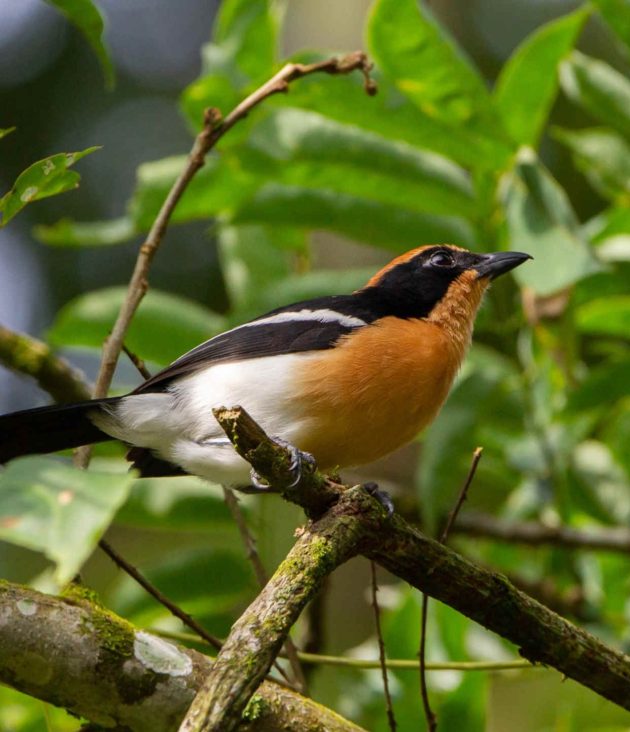
What are the main regions or locations you cover as a bird guide?
Uganda, Rwanda, Kenya, Southern Tanzania, and Zanzibar
Rwenzori Batis
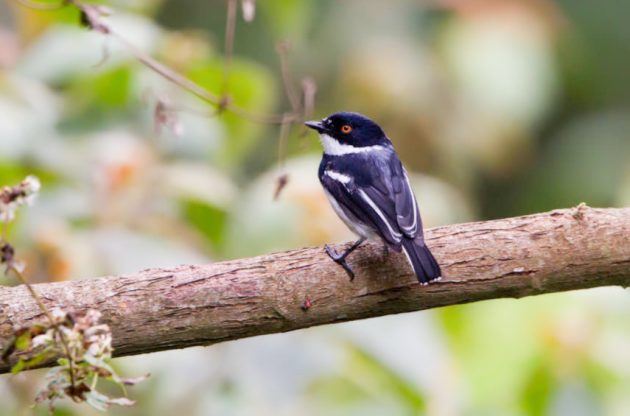
How long have you been a bird guide?
29 years
Regal Sunbird
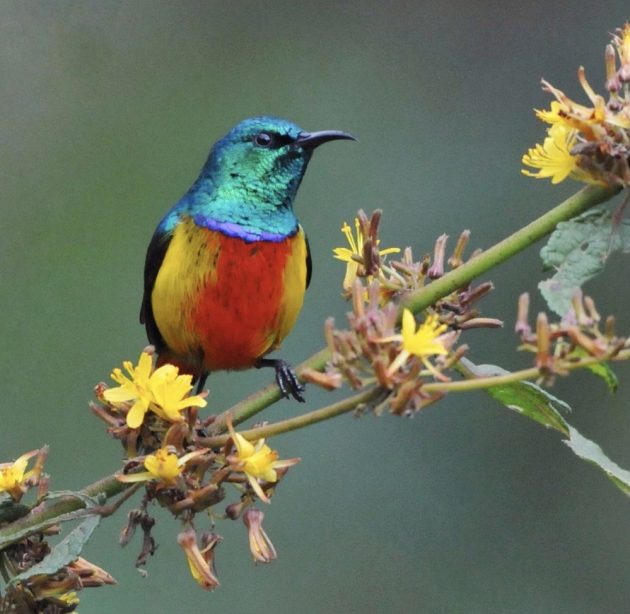
How did you get into bird guiding?
- From Curiosity to Calling: My journey into birding began in 1996, a unit in ornithology during my wildlife management course sparked a lifelong passion. Unlike others drawn to mammals, I was fascinated by the vibrant colors and elusive nature of birds, and I embraced the challenge of identifying them.
- From 1997 to 1999, while working in Queen Elizabeth National Park, I immersed myself in community conservation and education, leading students on game drives and boat cruises. These experiences enriched my birding skills and deepened my connection with Uganda’s diverse birdlife.
- Between 2000 and 2006, I worked with a Dutch tour company, guiding over 300 birders of varying expertise. These years refined my skills, broadened my field knowledge, and gave me the confidence to dream bigger.
- In 2007, I founded Go Uganda safari limited, which later changed to Lambano Moments Ltd, trading as Moments Beyond Borders, a family-run company offering bird watching and wildlife holidays. To better serve birding travelers, I launched a dedicated site at www.africabirdingmoments.com
- Today, I continue to share the joy of birding across Uganda and East Africa, helping others connect with nature and discover the beauty of birds, one moment at a time.
Martial Eagle
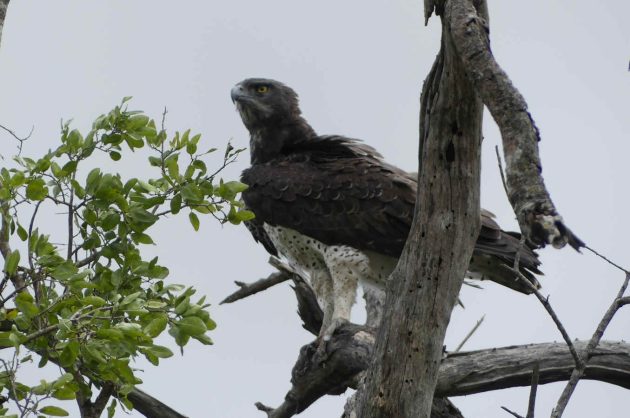
What are the aspects of being a bird guide that you like best? Which aspects do you dislike most?
Likes: Leading clients in bird identification within their natural habitats, sharing knowledge, and promoting sustainable practices that support both species conservation and habitat protection.
As a bird guide, two key dislikes:
1. Disruption to wildlife and habitat – Guests straying off trails or approaching nesting areas too closely can stress birds and damage delicate ecosystems, which goes against the principles of ethical birding.
2. Lack of focus or patience – Birding requires quiet observation and time. When guests become impatient or distracted, it can hinder the overall experience and reduce the chances of meaningful sightings.
Saddle-billed Stork
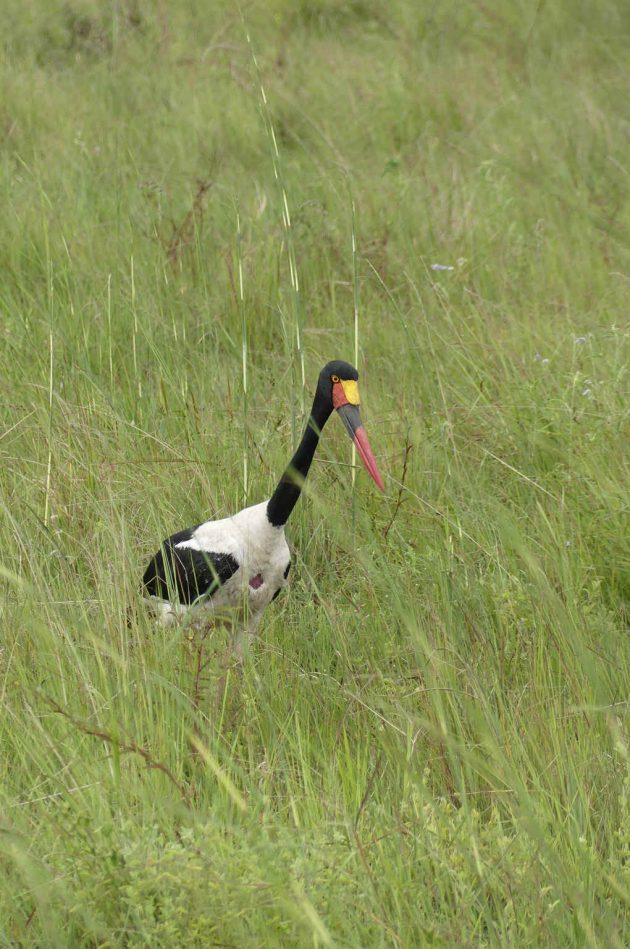
What are the top 5-10 birds in your region that are the most interesting for visiting birders?
- Grey-crowned Crane
- Green-breasted Pitta
- Shoebill Stork
- Fox’s Weaver
- Africa Green Broadbill
- Great Blue Turaco
- Rwenzori Batis
- Martial Eagle
- Karamoja Apalis
Shoebill Stork
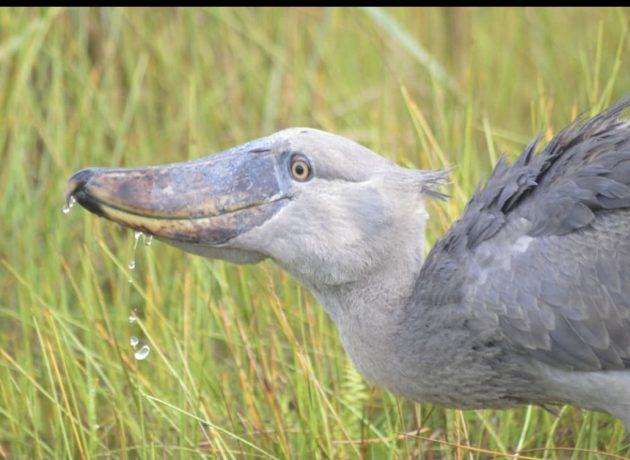
Can you outline at least one typical birdwatching trip in your area? Please briefly describe the locations, the key birds, and the approximate duration of such a trip
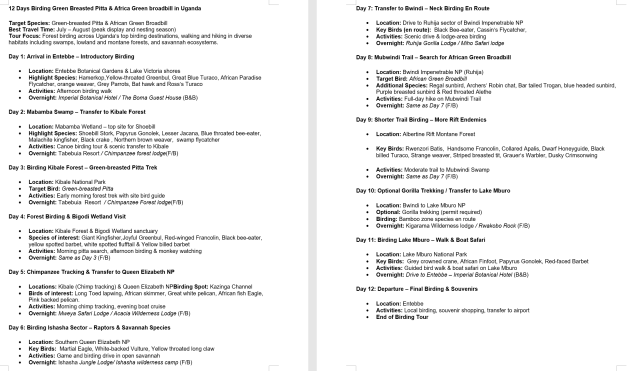
What other suggestions can you give to birders interested in your area?
Best season for birding in Uganda: Year-Round Birding. Thanks to its equatorial climate, Uganda offers excellent birding opportunities all year round, with two peak birding seasons during migratory periods. December to February is the dry season and a prime time for birding. Migratory birds from Europe and northern Africa are present, and many resident species are nesting, making them more active and visible. June to August is another dry season ideal for birding, especially for spotting Albertine Rift endemics. Trails are more accessible, and bird activity is high due to favorable weather conditions.
For a comfortable and successful birding experience in Uganda, make sure to bring the following essentials:
- Binoculars – A must-have for spotting birds clearly in all habitats.
- Field Guide – A bird guidebook specific to East Africa for quick identification.
- Download the app on your mobile phone: Merlin Bird ID or eBird
- Notebook or Birding Journal – To log sightings and take notes on behavior.
- Neutral-Colored Clothing – Long-sleeved shirts and pants for sun and insect protection.
- Sturdy Walking Shoes – Comfortable and durable for forest trails and open terrain.
- Hat & Sunglasses – For protection from the sun.
- Rain Jacket or Poncho – Useful for sudden showers, especially in forested regions.
- Insect Repellent – Essential for areas with bugs and biting insects.
- Reusable Water Bottle – To stay hydrated during long walks.
- Backpack – To carry your gear comfortably while in the field.
- Telescope/Spotting Scope – Ideal for long-distance birdwatching, especially in open habitats and high canopies
- Camera with Zoom Lens – For capturing birds and scenery.
Giant Kingfisher
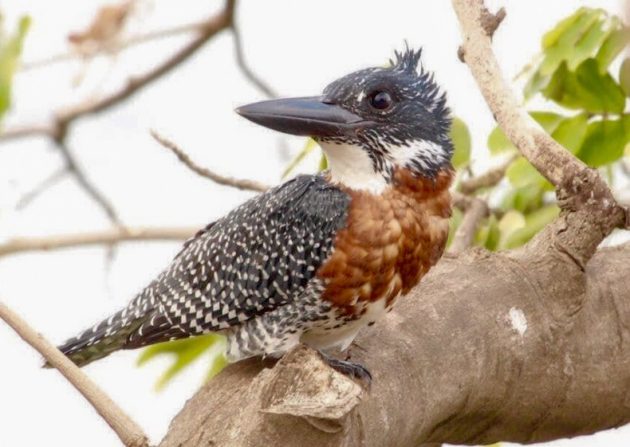
If any readers of 10,000 Birds are interested in birding with you, how can they best contact you?
- www.africabirdingmoments.com
- E-mail info@africabirdingmoments.com
- Mobile: +256700267406
- Instagram: @africabirdingmonents
Hamerkop
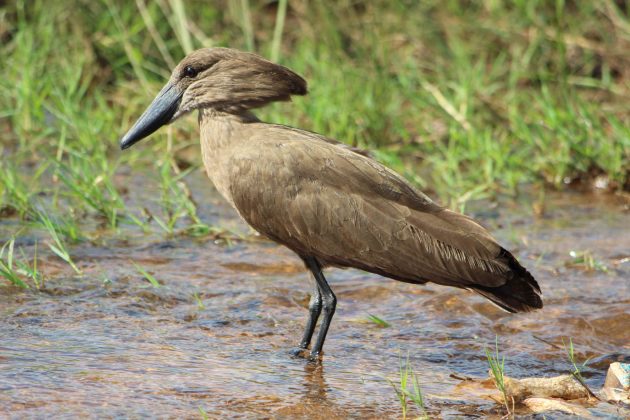
Is there anything else you would like to share with the readers of 10,000 Birds?
Why Birding in Uganda is a Must for Every Birder: Uganda is often called the “Pearl of Africa,” and for birders, it’s truly a hidden gem. With over 1,072 recorded bird species, including some of the most sought-after and rare birds on the continent, Uganda offers a rich, rewarding, and diverse birding experience. From misty montane forests to expansive savannahs, wetlands, lakes, and Albertine Rift valleys, Uganda’s varied ecosystems are home to an extraordinary range of birds, many of which are endemic, migratory, or regionally scarce. Whether you’re a casual bird lover or a hardcore twitcher, Uganda offers unforgettable birding moments.
Top Reasons to Go Birding in Uganda
- Incredible Species Diversity: Uganda boasts over 1,072 bird species, accounting for more than 50% of Africa’s bird population, in a country smaller than many US states.
- Home of the Shoebill Stork: One of the most iconic and prehistoric-looking birds, the Shoebill Stork, can reliably be seen in Uganda’s swamps, such as Mabamba Bay.
- Albertine Rift Endemics: Uganda offers a chance to spot over 20 Albertine Rift endemics, especially in Bwindi Impenetrable Forest, one of Africa’s most important birding hotspots.
- Rich Ecosystem Variety: Bird across diverse landscapes—rainforests, savannahs, wetlands, mountains, and lake systems—each offering unique species.
- Bwindi Impenetrable Forest – A Birding Mecca: This UNESCO World Heritage Site is globally recognized for both mountain gorilla tracking and exceptional birding, with over 350 species, including the African Green Broadbill.
- Accessible and Friendly Local Guides: Uganda is known for its welcoming communities and skilled local birding guides who offer in-depth knowledge and a personalized experience.
- Combine Birding with Wildlife and Culture: Uganda allows you to combine birding with gorilla trekking, wildlife safaris, chimp tracking, and cultural interactions for a truly immersive trip.
- Conservation-Focused Tourism: Birding in Uganda often supports community-based tourism and conservation efforts, helping protect habitats and species while empowering local communities.
Long-toed Lapwing
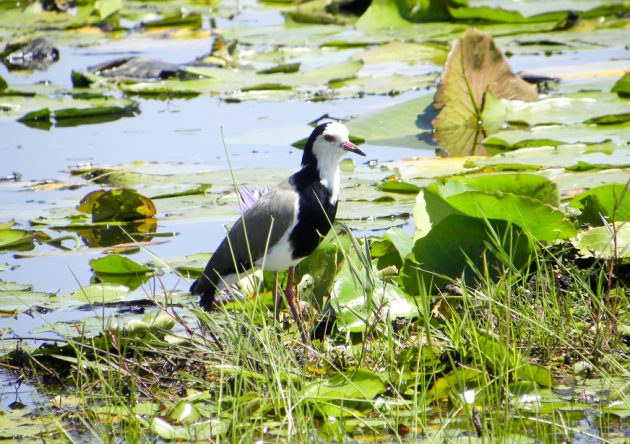


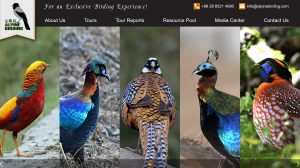
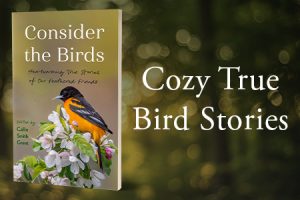
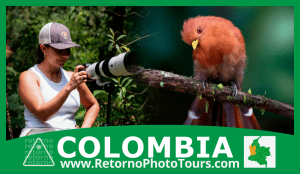
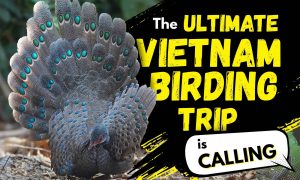

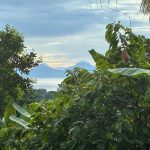
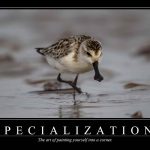
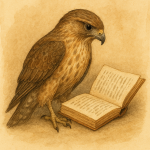
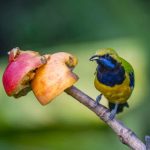
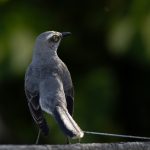
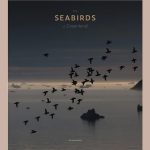
If you’re looking for an exceptional birding experience in East Africa, I highly recommend Miriam Magada. With over 29 years of birding expertise, she is not only one of Uganda’s most knowledgeable birders but also a passionate conservationist who truly cares about sustainability and the communities she works with. Her deep love for birds, attention to detail, and outstanding ground handling make every birding trip unforgettable. You’ll be in the best hands.
Miriam is truly one of the finest female birding guides in Uganda and East Africa. Her deep knowledge of bird species, sharp spotting skills, and passion for conservation make every birding experience with her unforgettable. She’s not only a trailblazer in a male-dominated field but also a true ambassador for Uganda’s rich biodiversity. A role model for aspiring female guides across the region!
I invited Ms. Miriam to lead a birding group I was hosting from Denmark for a two day birding experience in February last year, and she exceeded all expectations. Her knowledge of birds was exceptional, and she conducted the entire experience with great passion and enthusiasm. Ms. Miriam is highly knowledgeable, and I can tell her professionalism comes years of experience in the birding field. I wouldn’t hesitate to recommend her x100
Another great Ugandan guide – I want to return
As the first female guide and bird guide in Uganda you have inspired many women are joining the guiding as profession. Thanks for your creativity as you do what you love best .
It was so great to read Miriam’s profile! We had the most wonderful trip to Uganda in December 2024 that she arranged for our family of 3.
We saw so much of Uganda and over 300 bird species during our tour. We didn’t want it to be over!
Miriam is professional, knows her birds and Uganda like the back of her hand. Alongside Moses our driver, we saw all of our target species and had a great time!
She even arranged some surprises on the trip, like a breakfast at Murchison Falls which was incredible!
We really wanted a female guide, and we couldn’t have been happier with Miriam.
She is one the best female guide who is very passionate with wildlife and one of the who are willing to life up others to another level .I only say that for any one willing to have the best experience get InTouch with her the you will thank me for the rest of your life. Madam miriam keep it up until your last breath
Wow this is amazing Miriam. Close to 30 years of birding. Your work is really phenomenal and an inspiration to very many young birders in Uganda and East Africa at large.
Your attention to detail in spotting even the rarest birds whether through sight or sounds is very commendable.
I highly recommend more birding enthusiasts to work with you for great Africa Birding Moments.
Miriam is an exceptional guide. During our 15-day trip with her, she proved to be extremely professional and attentive to detail, making our trip unforgettable.
Excellent accommodations, a great atmosphere, and thanks to her, we were able to discover a lot about Uganda. She also provided us with the best birdwatching guides in each area. I 100% recommend Miriam as your guide for your trip.
Over the last decade I´ve traveled to different countries and met many bird guides and I can say that Miriam is an excelent guide, excelent person and an example to other women. She has a great knowledge about birds and habitats where they can be found and something I really appreciate is that, above all, she tries not to disturb the birds. Very good point in order to preseve them!
She always has a smile and takes care of every detail making the Uganda trip unforgettable!!!
More than 300 species of birds in 14 days!
Highly recomended, Moments Beyond Borders and Miriam as a guide!!
This has been the first time we hire the services of a guide for the whole trip, and the experience could not be better. Miriam’s passion and enthusiasm is so engaging that leads the group to become a team, and that makes it even more interesting. We share with her the respect for nature and love for animals. I don’t forget Jonathan, who made us to feel comfortable every single minute and drove us safe during the 2 weeks.
To sum up, unforgettable experience. I highly recommend Moments Beyond Borders and Miriam for your birdwatching experience in Uganda! Best team ever.